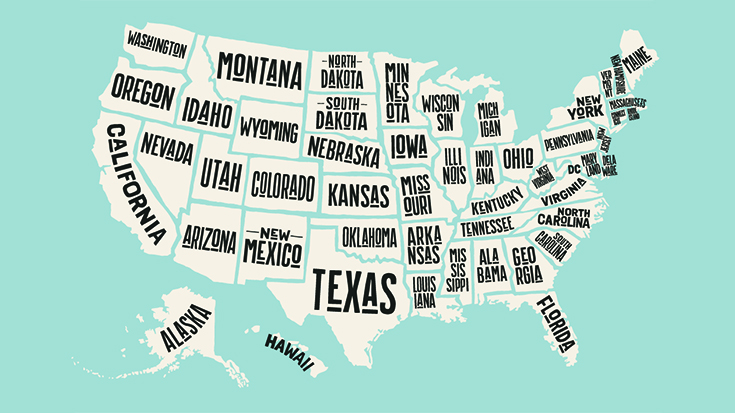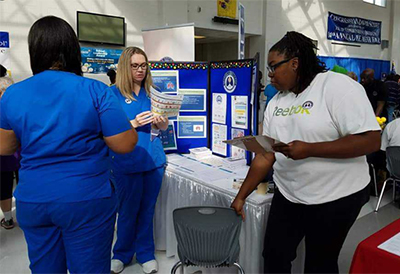
Member involvement drives the success of any association, and the AARC greatly appreciates its active members. We also want members to know how to maximize their AARC membership through involvement with their state.
Two AARC members– Joseph Ariale, RRT, and Kiley Hodge, RRT, RRT-ACCS—share their tips for getting more involved at your state, and why it’s important.
Value of involvement

“It is incredibly important for respiratory therapists to be involved at the state level!” Ariale said.
Did you know? Members benefit by being a member of the national organization and are also assigned to a State Society based on where they work or live.
“Even if you aren’t an AARC member, which you absolutely should be, it is still worthwhile to be involved at a state level,” Ariale said.
For Hodge, state-level involvement helps respiratory therapists keep up-to-date on health care issues. She can also keep up on changes that affect the patients in her state.
“At the state level you can be a resource to the RCPs in the state and promote the profession,” Hodge said.
Stay in ‘the know’
Ariale points out that one major issue decided at the state level is state licensure. He explains that state legislation can delegate out the duties of a respiratory therapist–the ones who are best suited for those tasks–such as aerosolized medication delivery and institution of mechanical ventilation.
“Issues like those should strike a chord with respiratory therapists all throughout the state,” Ariale said. “If the job duties of an RT are put in the hands of other health care providers, there will be no reason for hospitals and other facilities to continue to employ respiratory therapists.”
Beyond legislation and policies, state-level involvement allows you to collaborate with many different therapists on projects.
“This is where best practice guidelines can be created and implemented,” Ariale said. He then gave the example of South Carolina with the creation of the South Carolina COPD Strategic Plan in 2016. “The SC COPD Strategic Plan was a collaboration of respiratory therapists, physicians, pharmacists, COPD patients, Department of Health and Environmental Control representatives, and industry leaders. This plan brought together North Carolina and South Carolina in the effort to drive forward care for COPD patients.”
Hodge also explains that state involvement is an “invaluable networking tool.”
“I would not have had several opportunities over the years if I had not been involved,” Hodge said.
Maximizing your membership

For Hodge, state-level involvement helped her better understand how the AARC functions. It educated her on what the AARC does for the profession, such as legislation.
“Until I got involved at the state level I did not know about the house of delegates and its purpose,” Hodge said. “I also did not know about PACT and its purpose.”
Hodge, like others, initially thought the AARC only provided continuing education. And then she learned the breadth of services and opportunities available through the AARC.
“When you know all that the AARC is doing for our profession, the value is unbeatable,” Hodge said.
Finding community
“Being part of my state society allows me to more closely help shape processes that can help improve the day-to-day care given by respiratory therapists on a local level,” Ariale said.
According to Ariale, working on a more local level gives you a community.
“This is due to making friends throughout the state and creating a network of RTs that can work together on projects and research to better patient care,” Ariale said. “Personally, I have gained so many new skills from volunteering and learning from my mentors at the SCSRC. They are absolutely amazing, and I plan to utilize those skills as I roll into the Senior Director position for my region next year.”
Ariale also hopes to apply his state-level skills to the AARC national level.
“The lessons learned by getting involved on a state level can help you get involved on a national level as well,” Ariale said. “So, get to know your fellow respiratory therapists in your area and in your state society, you never know what opportunities may arise just by asking to help out!”
Tips for getting more involved
- Read emails and visit the website because a volunteer opportunity will come up. (Hodge)
- Attend state meetings because GSRC leadership organizes and attend the meetings. (Hodge)
- Go to the state Board of Directors meetings. They will generally welcome new people to the fold eagerly. This is where you can network and collaborate with other respiratory therapists from around the state. A major advantage to doing this is that it opens up your viewpoint of the world of respiratory care to something outside of what is in the specific hospital or area where you work. (Ariale)
- Ask to volunteer in any way with events like meetings and conferences. State societies are always looking for help with various tasks. This can run the gamut of making a coffee run before a Board of Directors meeting to helping plan for and put on the state conference or helping to promote legislation for the state. The main point is to put yourself out there and be available to assist in any way you can. This will open up further opportunities to help with bigger projects in the future. (Ariale)
Email newsroom@aarc.org with questions or comments, we’d love to hear from you.

















